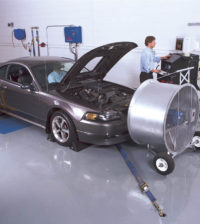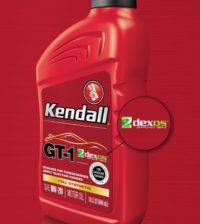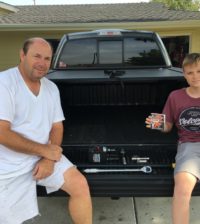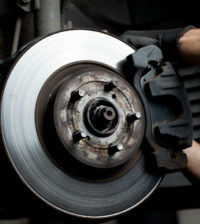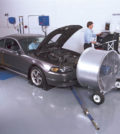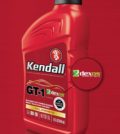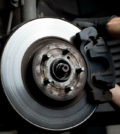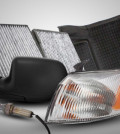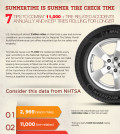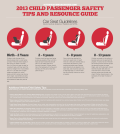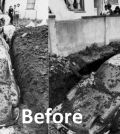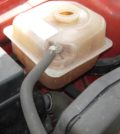- Summertime is Summer Tire Check Time: 7 Tips To Combat 11,000+ Tire-Related Accidents Annually — and Keep Tires Rolling for Longer
- 10 DIY Tips to Add Years to a Vehicle’s Life & Minimize Expensive Repairs
- Defensive Driving Tips to Avoid Costly Repairs As Wintery Driving Conditions Continue to Plague Roads
- AutoPartsWarehouse.com 2013 Child Passenger Safety Tips and Resource Guide
- Top Five Parts to Make Your Vehicle More Fuel Efficient
14 Car Driving & Maintenance Myths
There’s always that one advice that your dad, brother or uncle imparted to you while you were learning how to drive. Whether or not said advice was accurate or it was just a placebo effect, you kept this advice to heart and passed down that knowledge like it was a family tradition. But here’s the thing: times change. A lot of things that were true before may not be true now. So, in the service of the next generation of drivers (and old, who says you can’t teach old dogs new tricks, eh? We’ll show ’em!), we’ve compiled 14 common myths of driving and maintaining cars.
1. Change Your Oil Every 3,000 Miles
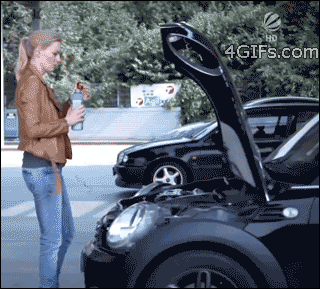
Source: Imgur
Technology has come a long way. Remember this because it’ll be a common theme here. Advancements in synthetic oils have changed the amount of mileage that one must accumulate before going in for an oil change. So how can you be sure when you need to send your car in for an oil change? RTFM (Read the Fine Manual)
2. Fill Your Trunk with Sandbags for Added Traction
This is a winter driving trick that was prevalent in the 70s. You’ve probably heard your dad or uncle or relative tell you that it helps if you put some weight on your car for that added traction and safety. This used to be true but, of course, times change, and modern tech has all but made this practice unnecessary.
3. Tire Pressure Hacks to Boost Traction During Winter

Source: Imgur
The entire point of having the proper tire pressure is making sure all parts of the tire hit the road. If you overinflate it, only the middle will touch it and you’ll have uneven handling. If you under inflate it, the tires will be soft and sluggish and as such will handle very badly. That being said, it’s pretty obvious that sticking to the right PSI will be safer than whatever hack you read or hear from someone else. When in doubt, go back to RTFM!
4. Keeping Your Tires Shiny with Some Amazing Product
Who doesn’t like a shiny tire? A lot of products are sold on TV that are said to keep your tires shiny and protected, complete with demonstrations and trustworthy looking fellow that’s like you, Mr. or Mrs. Joe Average. But think about this for a moment, do you honestly think that tire companies dole out tires that couldn’t withstand the rigors of daily driving? Tires are built to last, if you really want to bring back the shine, use plain water and mild soap, or use these products sparingly.
5. Automatic Transmissions: Leave it at “3” or in “D” with the overdrive button off — and save “D” for the highway.

Source: Imgur
Automatic transmission has come a long way (WARNING: X has come a long way will be said a lot in this post), and while the logic is to get to higher gear for a more responsive drive, AT are responsive enough that this is no longer a thing.
6. Automatic Transmissions 2 – Electric Boogaloo: Shift to Neutral at Red Lights.
This is a fuel saving practice, but again, with modern cars nowadays, the amount of fuel loss when kept in Drive is negligible. If you wanted more control of your vehicle like that, maybe you should consider driving manual.
7. Premium Gas Is Always Better Than Regular
This hasn’t been true since the ’90s. Really, unless you run a vintage car, premium gas is no longer required. How did this go about? Modern technology of course! Most cars now have sensor to prevent misfires or mistmings in today’s modern engines that were prevalent during the olden days and lower gas.
8. Full Tank at Dawn

Source: Imgur
Scientifically speaking, at colder temperatures, fluids are denser. Gas is fluid and dawn is probably the coldest part of the day. Going by that logic, filling up at the crack of dawn would mean you get more gas than what you paid for right? This can’t be denied, this is science! SCIENCE! Except the fact that gas is stored in constant temperature so the difference, if any, isn’t noticeable. Want to save on gas? Start with how you drive.
9. Start Your Car and Wait 5 Minutes to Warm It Up

Source: Imgur
Actually, this is kind of important to do during the winter but not for the reason you’re thinking. Warming your car is really unnecessary, unless of course you’re the type that floors it the moment you start moving. During the cold seasons though, warming up isn’t for the car but for you. A frozen driver is not a happy driver.
10. Leaving Your Ride on Idle is More Fuel Efficient than Turning the Engine On and Off
Let’s get this out of the way: Idling = bad. Simply put, idling the car consumes fuel. So if you know you’re going to be stuck for a while and you don’t mind not using the AC, turn the engine off and you might save a bit on fuel.
11. You Can Drive Perfectly Well on a Spare Tire

Source: Imgur
It’s called a spare for a reason. Also note that it’s been stuck wherever it is your stored it for a long time. It hasn’t been regularly maintained like the rest of your tires (unless you went out of your way, good for you). Also remember, if you’re on your spare, that doesn’t mean you have another spare. Always adhere to this saying: It’s better to have it and not need it than to need it and not have it.
12. No Need to Wear Seat Belt When You’re in the Backseat
The pluses of wearing your seatbelt when riding up front are well documented. What makes you think those things don’t apply to the backseat? Why else would they have them there? Think about it. Be safe and strap in.
13. Using Your Phone’s Hands-free Headset while Driving is Safe Enough

Source: Imgur
People often think it’s because you’re holding your phone that’s why using it is unsafe while driving and is doubly true when you’re texting. But really, it’s the fact that you’re distracted that causes the most danger. You’re driving a machine made up of tons of steel traveling at high speeds… Of course you need to focus!
14. Keep Your Doors Unlocked for Rescuers in Case of an Accident
Chances are, you won’t need rescuing since accidents that require emergency units are more likely to eject you from your vehicle due to an unlocked door. Car manufacturers are spending millions of dollars to find a way to make your car safer for such situations–they’re called windows by the way. And obviously, having your doors locked will deter carjackers as well.

